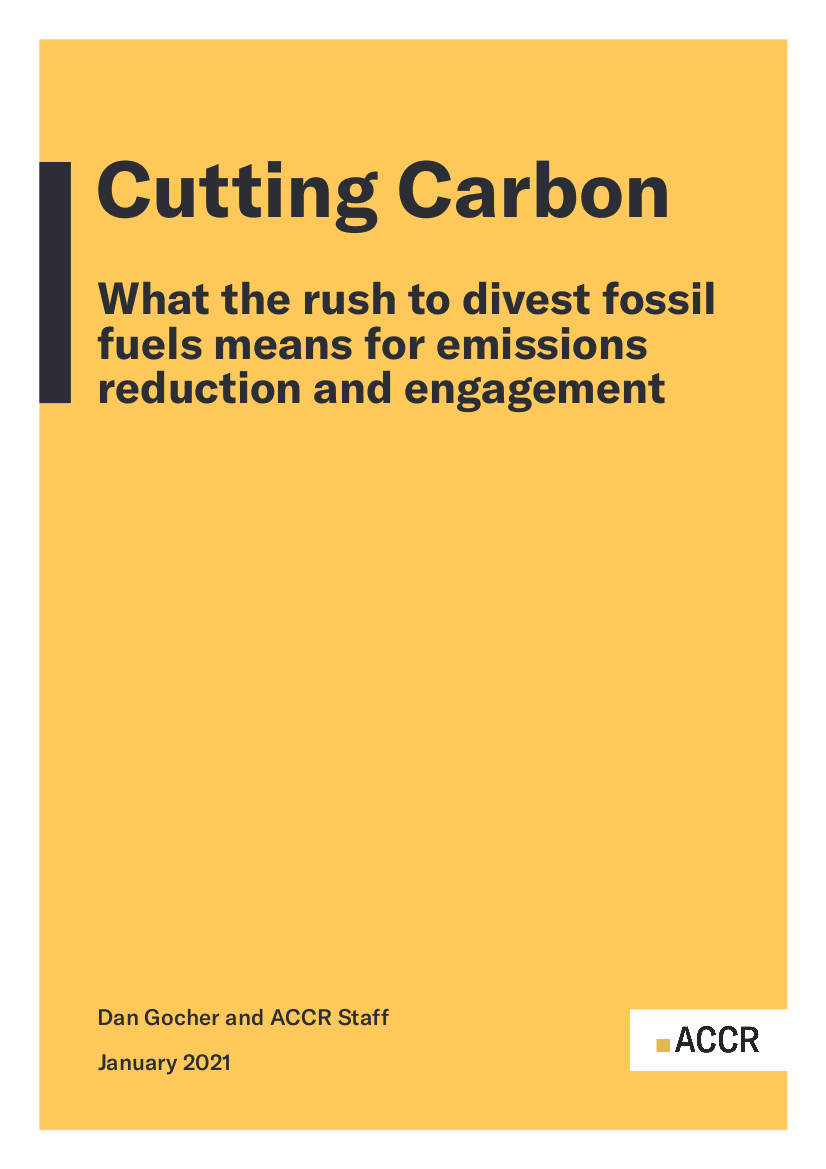Publication Cutting Carbon: What the rush to divest fossil fuels means for emissions reduction and engagement: 4. Australia's emissions performance
Australia’s emissions performance has been steadily out of step with efforts to secure a safe climate. As a leading exporter of fossil fuels, the country’s largest contribution to carbon pollution is the burning (overseas) of coal, oil and gas extracted in Australian territory.[1] Nonetheless, the carbon pollution resulting from economic activity within Australian borders is significant and is the subject of a mandated reduction under the Paris Agreement. These emissions have remained on a trajectory far from what is needed to limit global warming to 1.5°C.
Various analyses have consistently drawn attention to the stubbornly high rate of Australian carbon pollution,[2] which must fall sharply to meet Australia’s commitments under the Paris Agreement.[3] Even the unexpected decline in emissions-producing economic activity over the past year, related to the COVID-19 pandemic, has not been sufficient to bring Australia’s carbon pollution down in line with a trajectory that will meet its Paris obligations.[4]
Australian climate policy has vacillated in recent years, in no small part due to the efforts of lobby groups seeking to weaken regulation of carbon pollution.[5] This has allowed a small number of large companies—particularly in fossil fuel intensive industries—to continue with heavily carbon polluting activities. [6]
The trajectory of sectoral carbon emissions in Australia is charted below in Figure 1. Over the last decade, emissions from electricity—by far the most significant source of carbon pollution in Australia—have declined significantly due to the rapid growth of renewable energy generation. Nonetheless, they are still much higher in aggregate terms than they were in 1990. Emissions from mining have dramatically increased since 2015, largely attributable to the expansion of the Australian LNG industry.[7]
Tom Swann, “High Carbon from a Land Down Under”, The Australia Institute, July 2019. ↩︎
International Monetary Fund, Fiscal Monitor: How to Mitigate Climate Change, October 2019; https://climateactiontracker.org/countries/australia, accessed 26 November 2020; “Tracking 2 Degrees”, Ndevr Environmental Consulting (blog), accessed 26 November 2020. ↩︎
Mike Foley, “Australia’s Emissions Reductions Falling Short of Climate Commitment”, The Sydney Morning Herald, May 2020. ↩︎
Nick O’Malley, “Australian Emissions Break Paris Targets Even after Corona Quiet”, The Sydney Morning Herald, June 2020. ↩︎
InfluenceMap, “Australian Industry Associations and Their Carbon Policy Footprint”, September 2020. ↩︎
Clean Energy Regulator, “Australia’s 10 Highest Greenhouse Gas Emitters 2018-19”, (website) accessed 26 November 2020. ↩︎
“Quarterly Update of Australia’s National Greenhouse Gas Inventory: March 2020”, August 2020, p9. ↩︎
